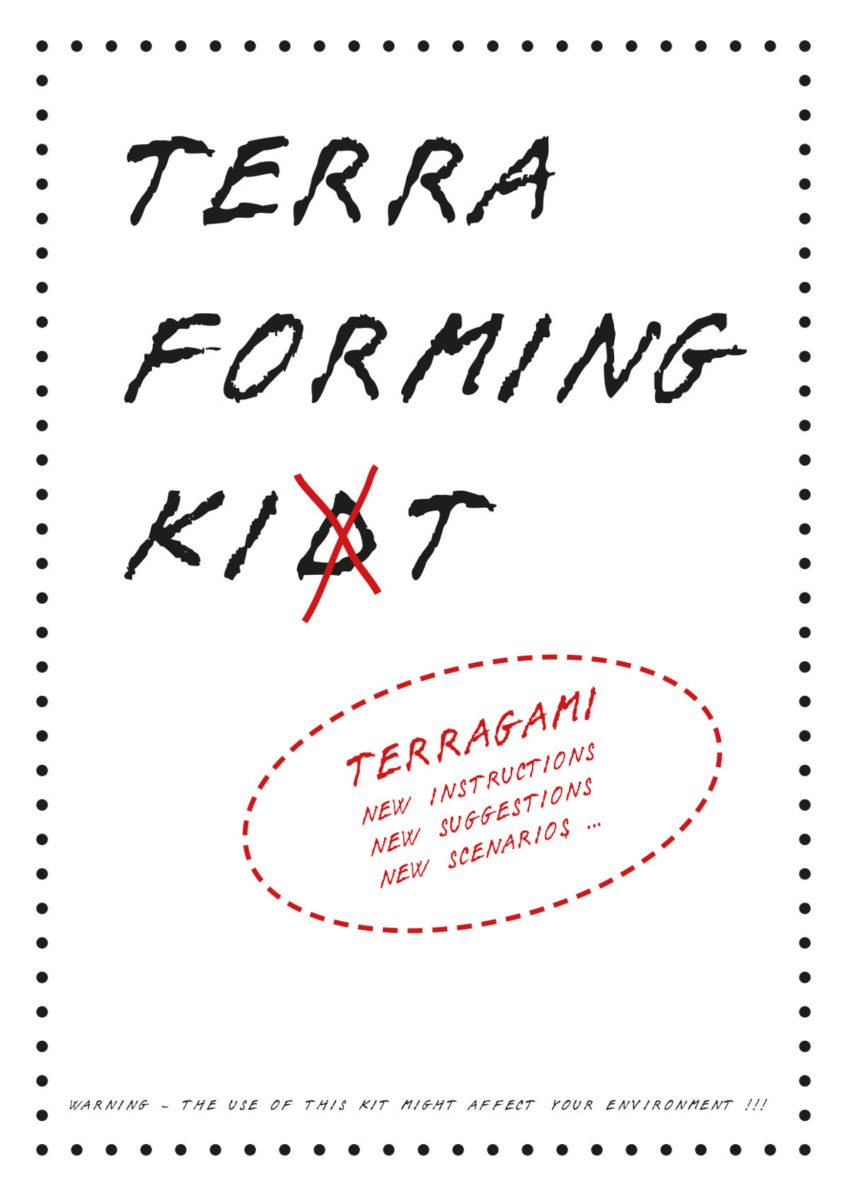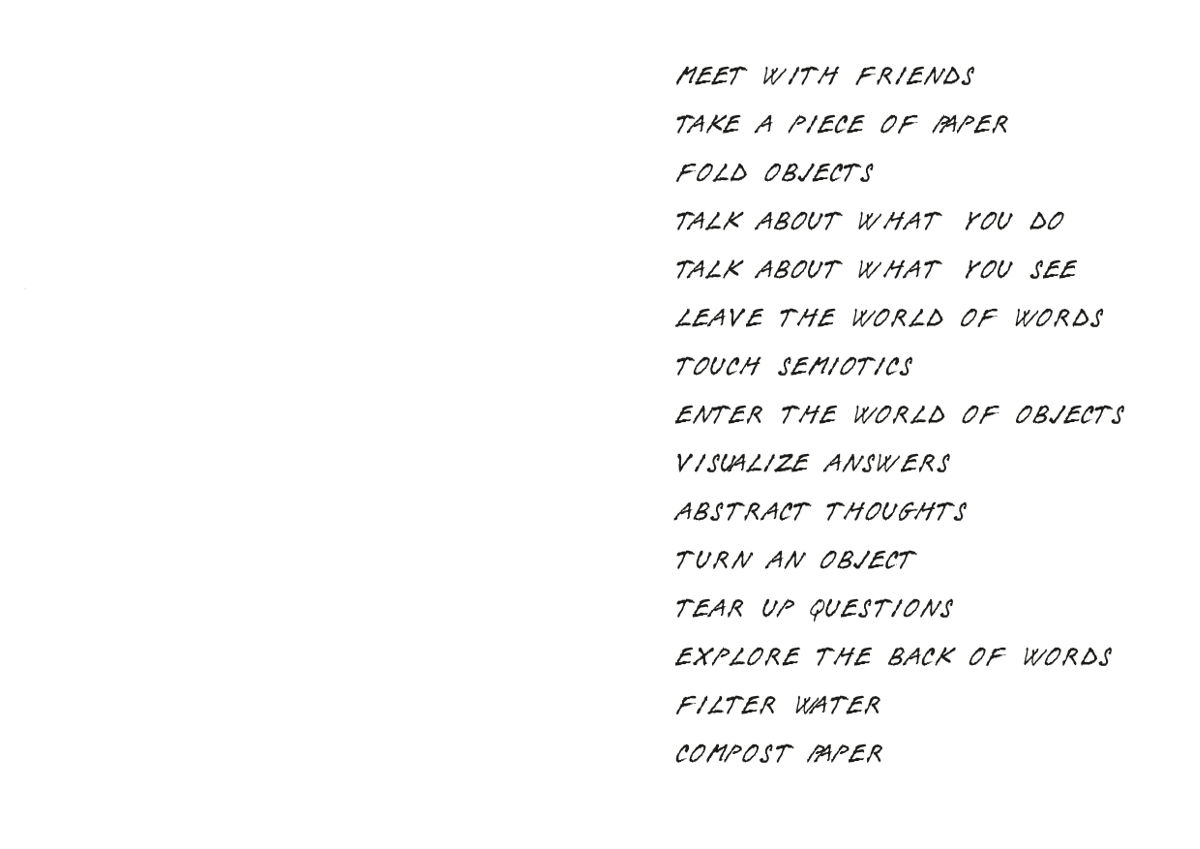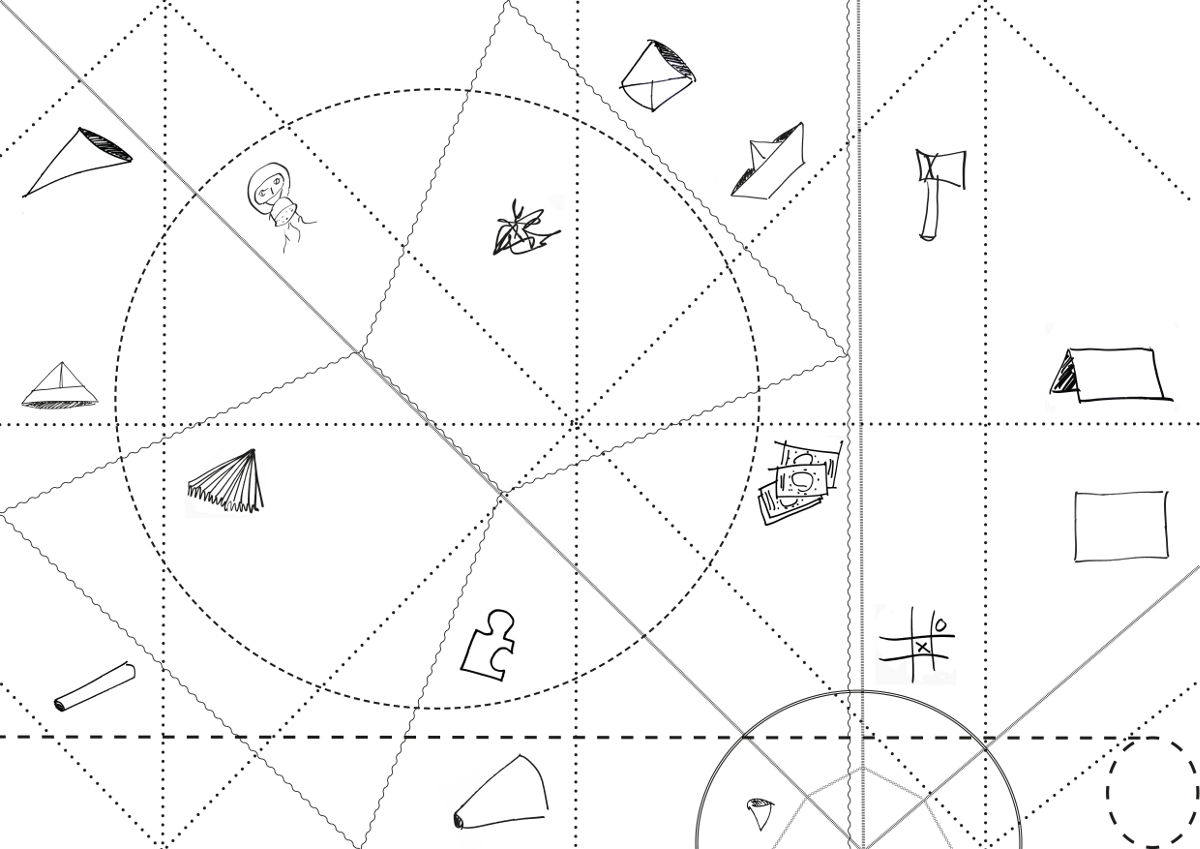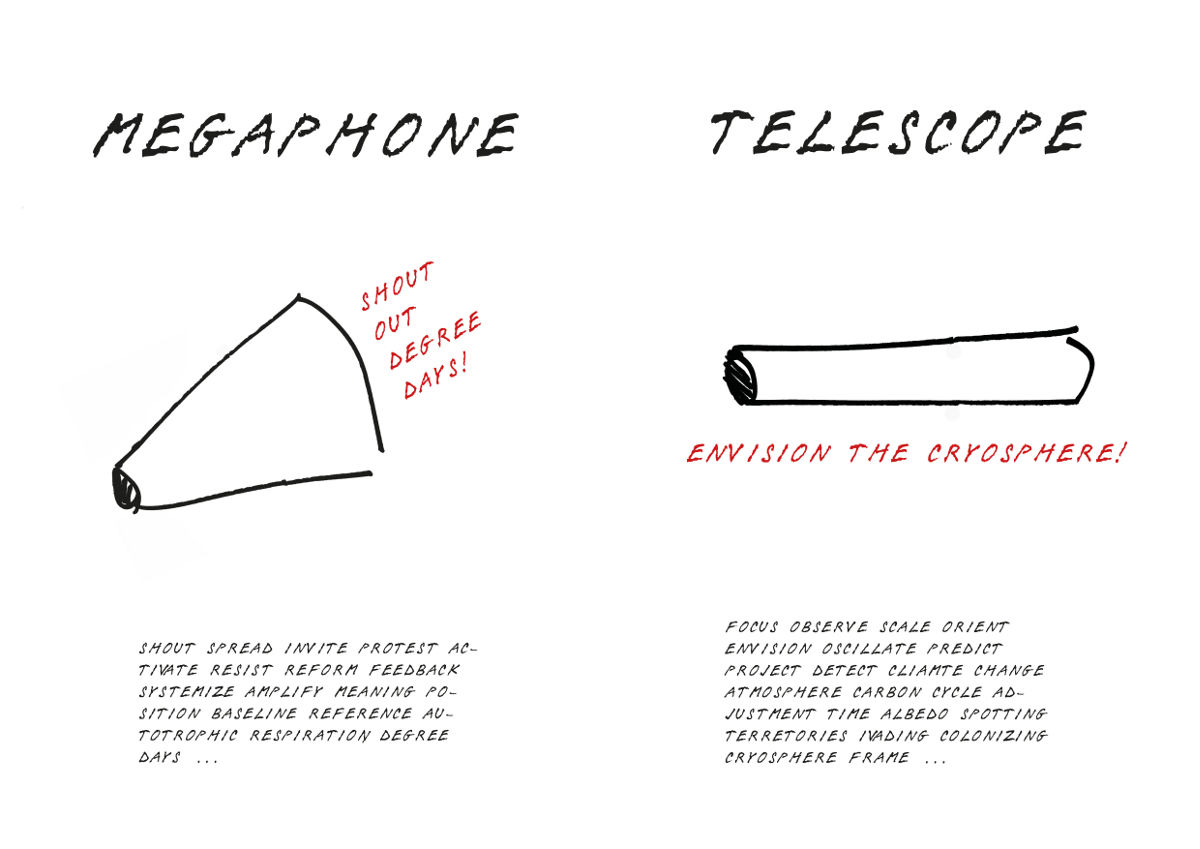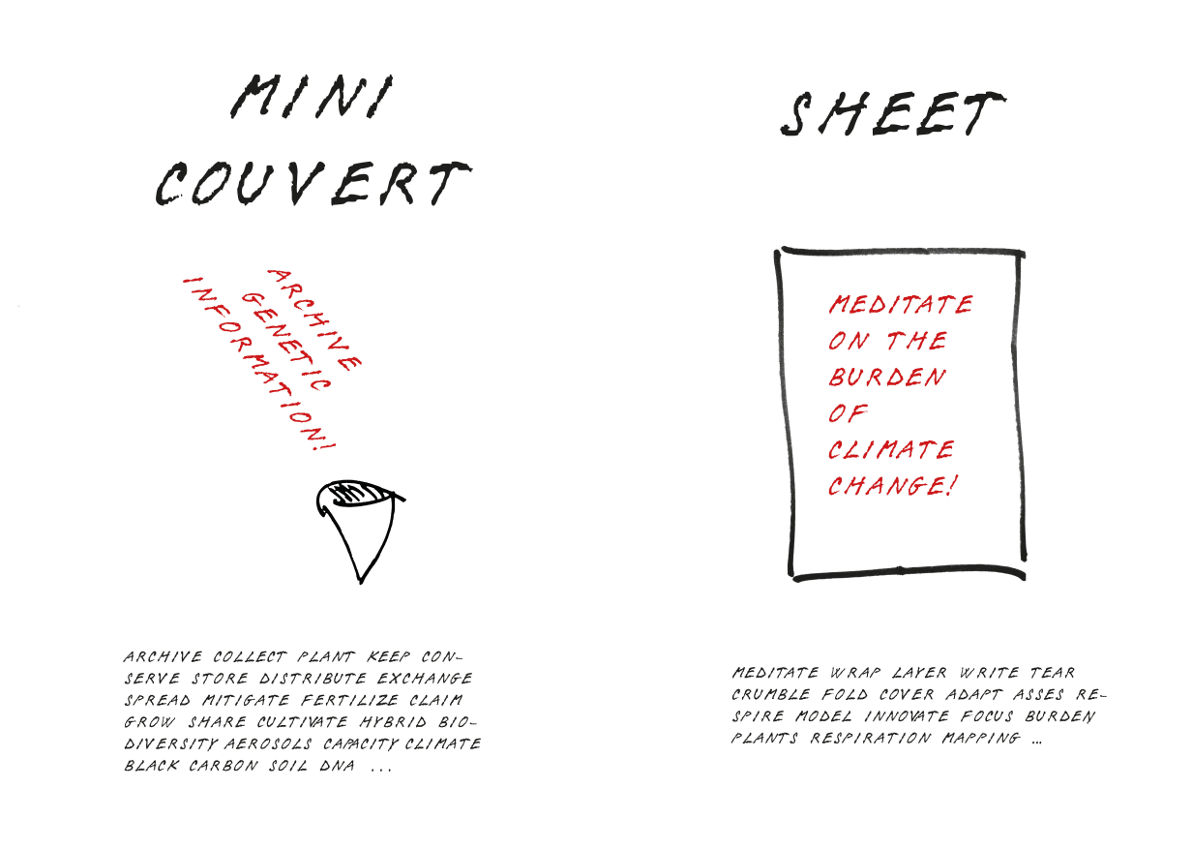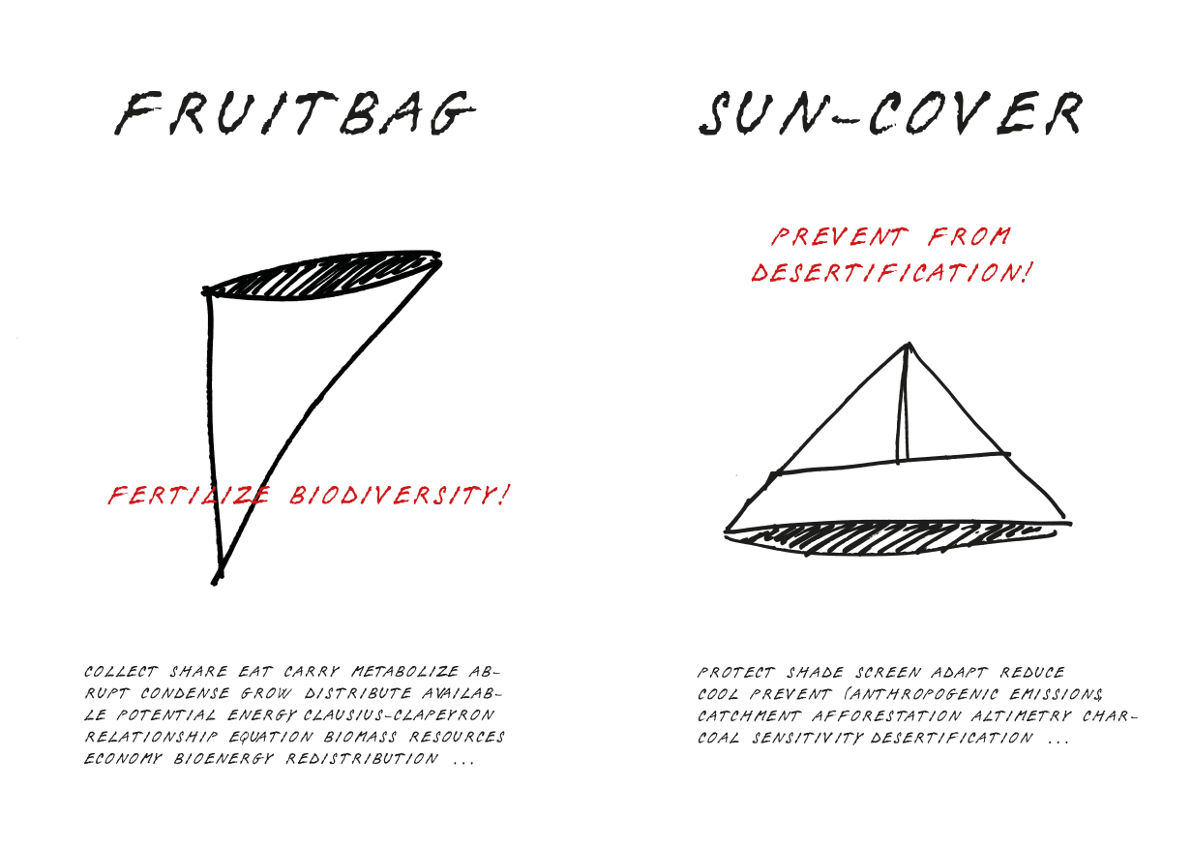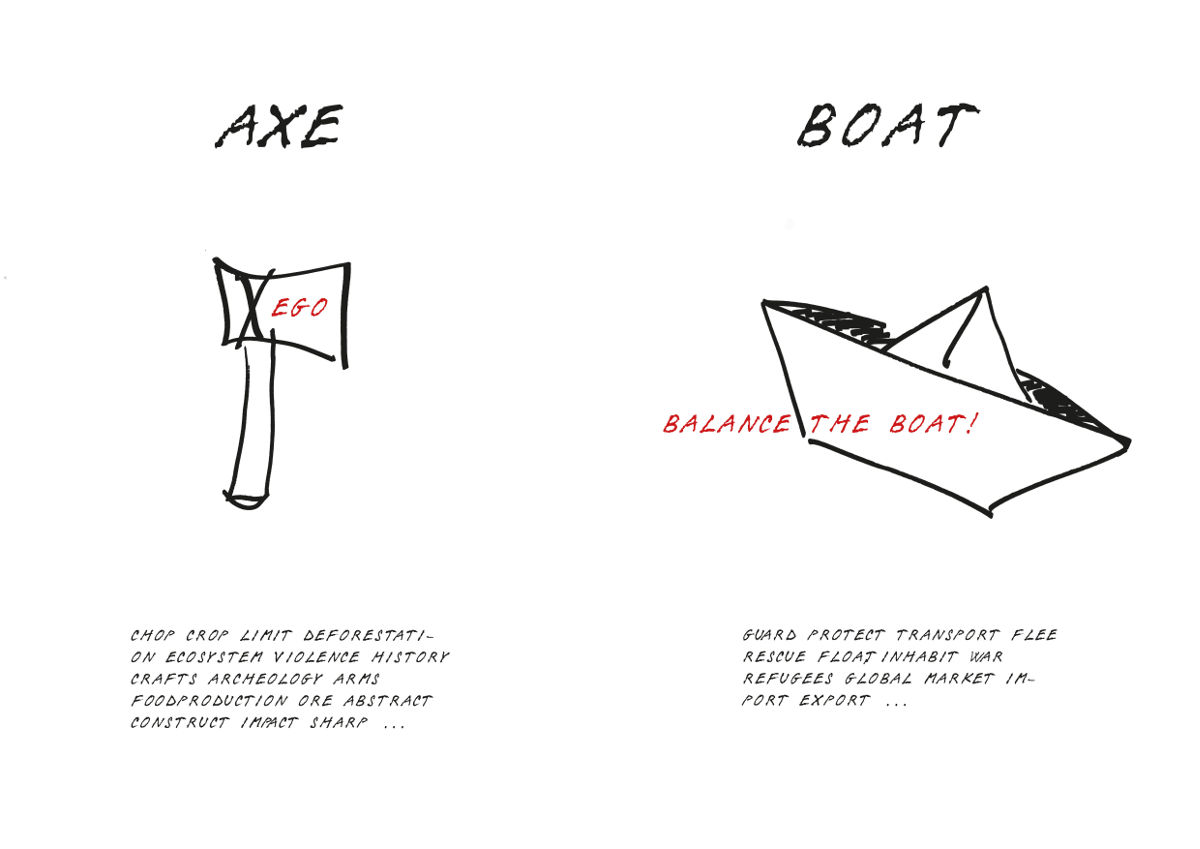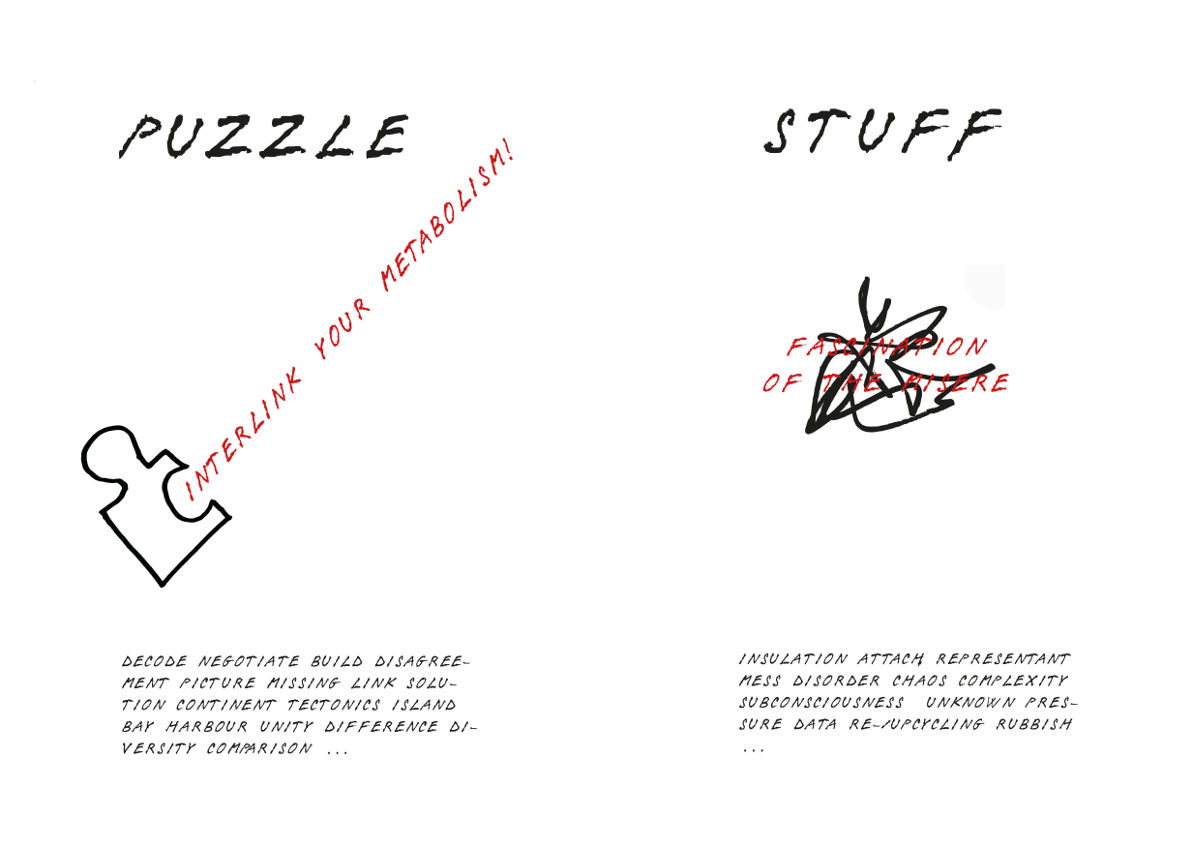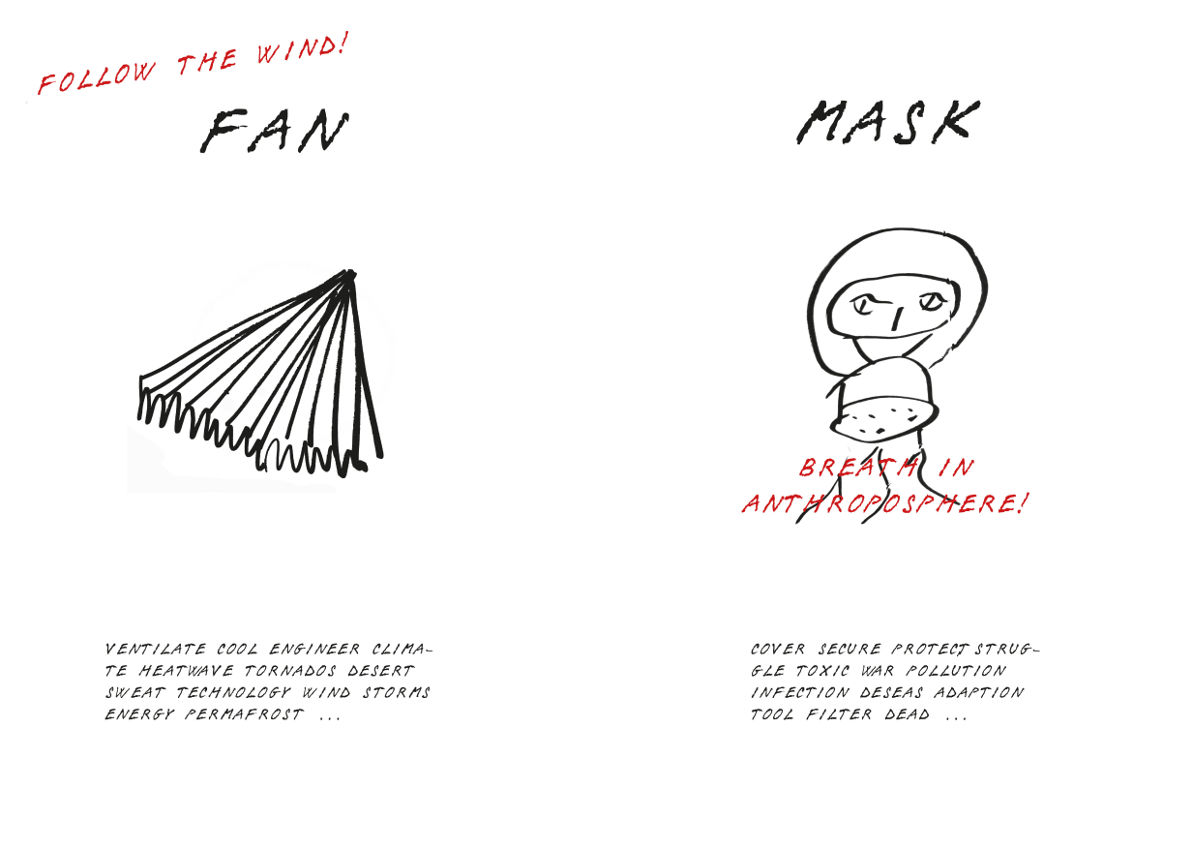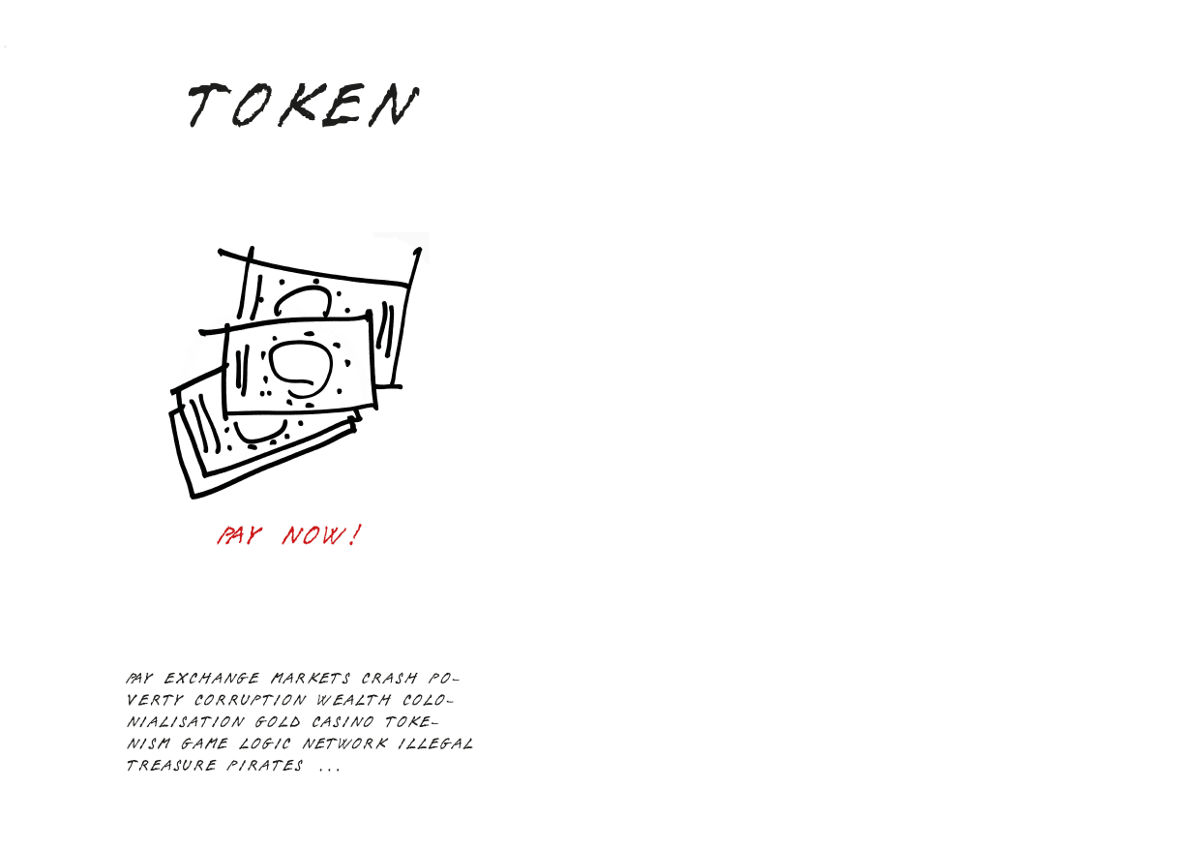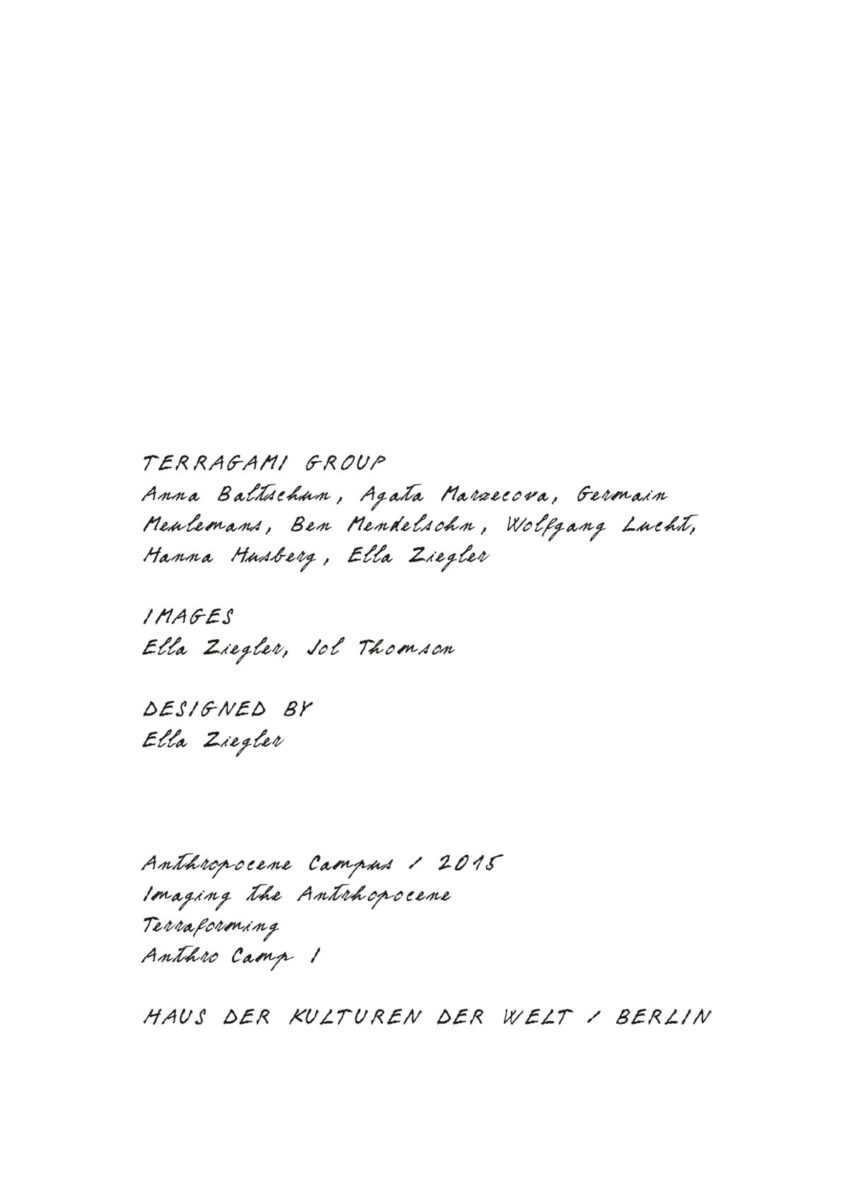Terraforming
We set off from the initial agreement that the challenges inherent to engaging with the issues and questions posed by the concept of the Anthropocene were not predicated on problems of representation, nor could they be sufficiently addressed by that mode. We were interested, therefore, in questions pertaining to agency: How to create, perform, or enact devices or modes of thinking by way of direct engagement with discursive materials, which indicated the challenges that needed addressing, and necessarily required participation.
The group created Terragami, a tongue-in-cheek paper-folding game that addresses issues and suggests materials for comportment in and after the Anthropocene. The problem or question of terraforming (inspired by Wolfgang Lucht’s explication of the Mental Component of the Earth System1), we once again shifted from its usual sphere of reference to focus on semantic processes of meaningful planetary subjectivization processes: What terraforms the mind? Is it possible to terraform the mind towards a good Anthropocene? Is it worthwhile to think of the global media, education, economies, theories, and resource management as materials enfolded into matter—the energy requirements of an organized and sustainable biosphere?
by Jol Thomson
From Terraforming to the Terragami Kit
Terraforming > Origami > Terragami
by Ella Ziegler
The process of oral communication is a 3-D acoustic phenomenon. Sound waves are modeled by the vocal cords, travel through space, and then enter the eardrum. The pronunciation of a term transforms written text or thoughts into a 3-D acoustic signal. The written transcription of a speech is going to flatten this signal into written or printed letters—in a text. Origami is a miraculous folding process that transforms an idea or a term into a 3-D object. First, the folding challenges our 3-D imagination and, second, the final object provides an indefinite number of perspectives on a 3-D object in space.
The Terragami kit is the starting point for folding words and terms into objects while we are communicating in discussion. Terragami allows us to fold questions and answers, thoughts and feelings in a playful way. Since terraforming is a global 3-D process, we suggest moving from drawing diagrams and writing text to folding words and thoughts. For example, the folded question could be a boat, a megaphone, and a shelter; the answer could be a crumpled piece of paper, and so on.
